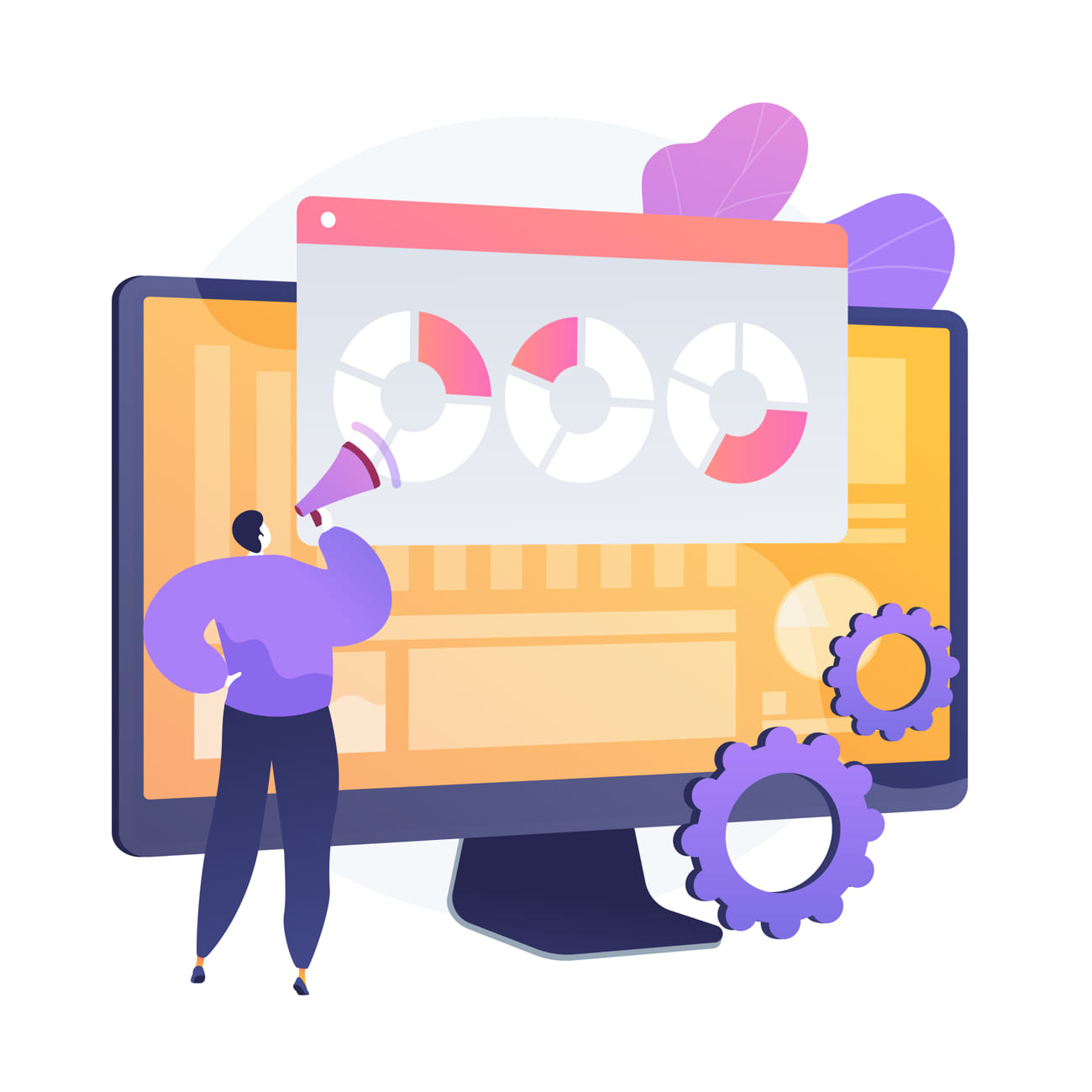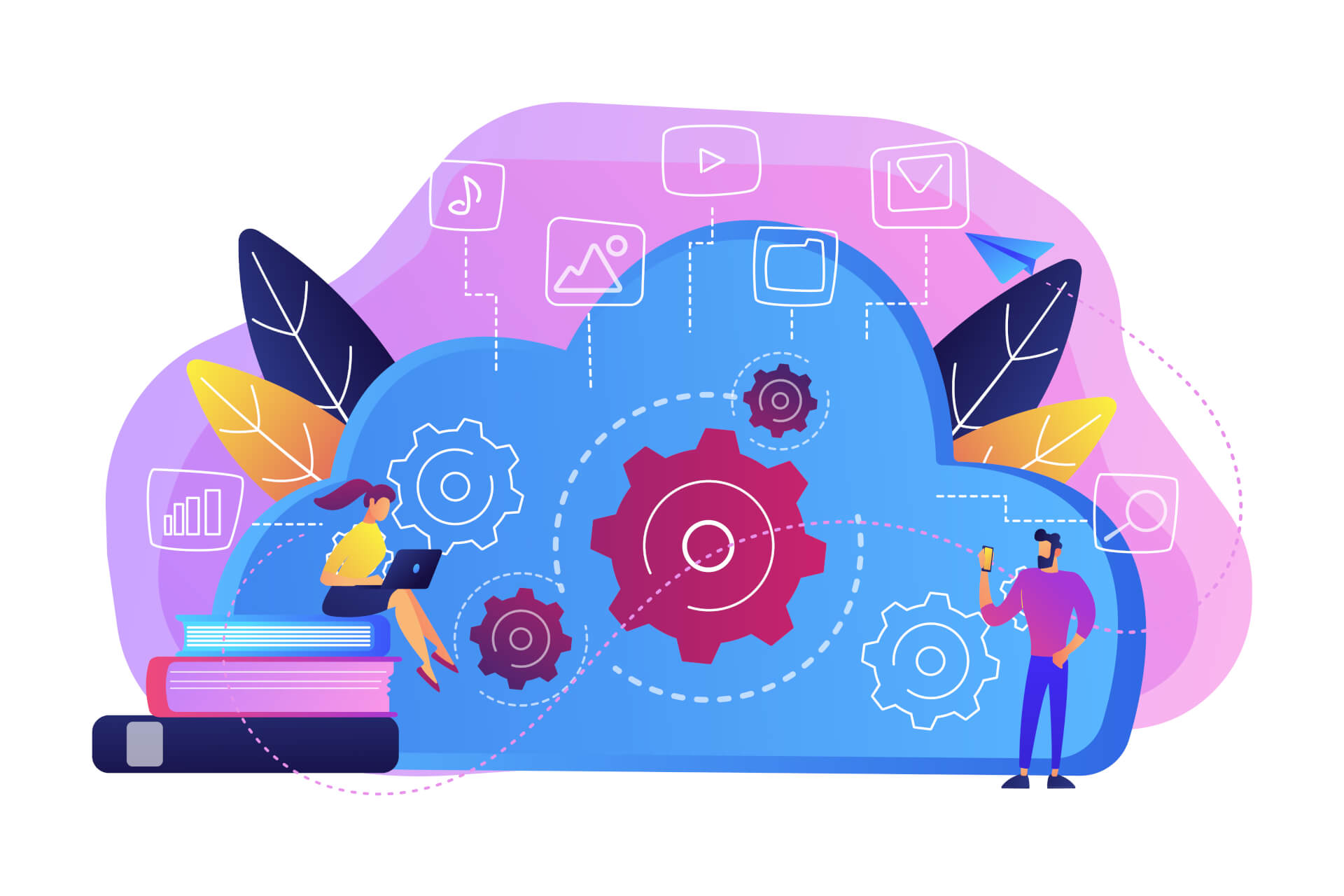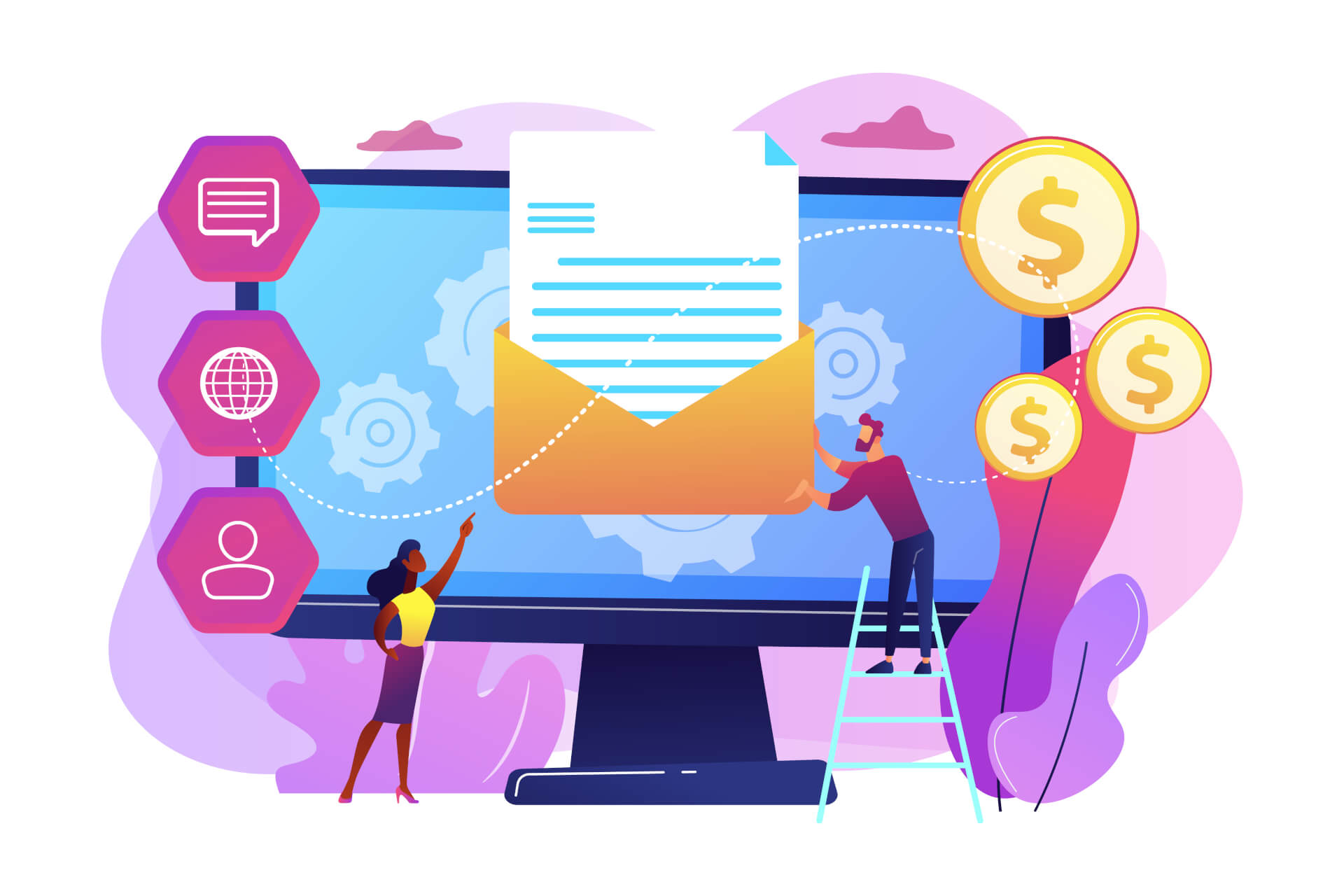To truly understand customers and increase customer loyalty, organizations must focus a large portion of their resources on researching customer feedback. Depending on the approach to the subject of feedback, it can have a positive impact on the business, but it can also be detrimental.
This little guide shows how valuable customer feedback can be. Simple actionable steps are recommended on how to collect feedback and respond to it.

Table of Contents
- How important is customer feedback for your company?
- It will help you improve your products and services
- Increase recommendations
- Improve customer loyalty
- Get more profit
- What is the customer feedback loop?
- This is how you get actionable customer feedback
- How to manage customer feedback
- This is how you can make the most of customer feedback
- That means
How important is customer feedback for your company?
 Feedback represents the positive experiences, frustrations and weaknesses of your customers. It shows why some customers love your brand and what prevents others from thinking that way too.
Feedback represents the positive experiences, frustrations and weaknesses of your customers. It shows why some customers love your brand and what prevents others from thinking that way too.
In principle, customer feedback enables third parties to examine the perception of your brand and promotes targeted measures to increase customer satisfaction.
So it's safe to say that focusing on customer feedback and making business decisions based on that can have several benefits.
It will help you improve your products and services
 Your customer feedback tells you exactly what action needs to be taken to ensure that existing customers continue to do business with you. For example, feedback can tell you whether your support team needs additional training, more staff in general, or other resources to meet your customers' needs.
Your customer feedback tells you exactly what action needs to be taken to ensure that existing customers continue to do business with you. For example, feedback can tell you whether your support team needs additional training, more staff in general, or other resources to meet your customers' needs.
Feedback on products highlights issues that are affecting the customer experience or a desire for features that would improve the customer experience.
Marketing feedback can help you determine whether your advertising is too aggressive, too vague, or even wrong (e.g. if the marketing text inadvertently claims that your service can be integrated with a particular third-party service when it is actually not possible).
Increase recommendations
Particularly satisfied customers will tell friends and acquaintances about your company. Statistics show that an average of 9% of satisfied customers report their positive experiences with a company to an average of up to nine people.
Studies have also shown that 90% of consumers research online reviews in advance before doing business with a company. In addition, around 88% of them trust these online reviews as much as they do personal recommendations.
Improve customer loyalty
 The happier customers are with your brand, the more likely they are to stick with it.
The happier customers are with your brand, the more likely they are to stick with it.
According to research, 2/3 of buyers are willing to accept a price increase, for example, if they can continue to work with the company and provide excellent service.
What a customer defines as excellent customer service can range from great and fast support to user interface tweaks that make the customer experience great.
Get more profit
Given the above, that's pretty obvious. With loyal customers, customer loyalty increases by leaps, recommendations lead to more leads and your company is growing rapidly.
Research also shows that highly engaged customers shop much more often and also spend more money per transaction.
What is the customer feedback loop?
In short, this is a customer relationship management strategy that collects and implements customer feedback. Because of its four stages, it is often referred to as the ACAF loop. The 4 levels consist of:
- Asking customers for feedback.
- Categorization of the feedback received.
- Act on the feedback (pass it on to relevant departments, fix bugs, etc.).
- Get in touch with customers to let them know about the improvements.
Overall, the customer feedback loop is a continuous cycle in which you collect feedback, analyze it, act on it, and track it.
Responding to the feedback by implementing solutions as soon as possible, recognizing the importance of customer suggestions, and responding to customers to let them know that the issues they reported have been fixed, you can close the customer feedback loop. This greatly improves the customer experience as it shows how committed the company is to understanding its weak points.
You also show customers who believe that their feedback is not taken seriously, that it is not the case, and that you value the feedback. A closed system can therefore allay all customer concerns and increase satisfaction and loyalty rates.
This is how you get actionable customer feedback
Here are some efficient customer feedback methods you can use to collect actionable data.
Please note in this context: Customer feedback must be collected and segmented for each step of the customer journey. If you don't, you won't get any really useful insights.
You have an easy to use channel that you can use to make users feel valued by letting them know when you will act on their suggestions.
1. Monitor social media

When customers complain about a problem, mention bugs or malfunctions, or want to praise a brand, they don't always contact the company directly.
Instead, they often post their reviews on social media and expect your company to respond to that feedback. Solving customer feedback through this channel not only improves your image, you also save money, as solving a customer problem on social media is six times cheaper than, for example, through a call center.
Of course, it's not really possible, or at least very difficult, to track social media mentions across all relevant platforms. Even if you had a whole team to take care of it, it would still take too much time and effort. Resources that could be better used in another area of your company.
Sure, some people might send you direct messages on social media, which makes things a little easier, but not all customers will. Some of them only talk about you in comments or posts that don't tag or link to your business.
Fortunately, you can use social media monitoring tools that will notify you when your brand is mentioned on various social media websites. Use these tools to quickly identify your brand's online mentions.
If your team uses these social media feedback monitoring tools, it will be much more efficient. When analyzing comments and posts on social media, focus on the following things:
- The mood of the customer (positive, neutral or negative).
- The main problems and topics repeat themselves in most of the comments.
- The tone of speech used (satisfied, frustrated, sarcastic, angry, etc.).
This way, relevant feedback can be collected and processed in a timely manner.
2. Make a list of feature requests
As the name suggests, it is a centrally managed list in which customer requirements are published, saved and analyzed by the product development team.
You can either ask customers directly what new features and improvements they want to see, give them access to the list so they can post their own suggestions, or vote on existing ones.
Reasons to keep a list of feature requests:
- This gives your customers the feeling that their voices are actually being heard and that they are actively contributing to your product roadmap.
- Take the guesswork out of product development because you know exactly what your high-minded customers want most.
- Your customers may feel more connected to your brand, which can improve their loyalty.
- You have an easy-to-use channel that you can use to make users feel valued by letting them know when you will act on their suggestions.
There are various options for implementation. For example, if you have the time and staff, you could create a private Facebook group where customers can post their suggestions. However, something like this only works well if you have a large number of active and committed customers who use this social network. If you don't, it can be a little difficult to get them to interact.
An easier way to collect data for the product roadmap is to use a product that directly gives you a user-friendly platform for collecting and organizing functional requirements.
3. Use customer feedback surveys

A customer survey is a great way to collect relevant data (referral potential, satisfaction rates, trust levels, etc.) from your target audience.
Customer feedback forms can also be used, but are not as versatile as surveys. Plus, they tend to be longer, so customers may not be as inclined to spend their time filling them out.
Gathering feedback with surveys is pretty easy as it can be sent through a link, email, or website widget.
For example with the NPS (Net Promoter Score)
With NPS surveys, you can track growth indicators that show how loyal your customers are, how likely they are to recommend your brand to others, and how satisfied they are with your products and services. Questions about the NPS Customer Feedback Survey are usually as follows:
"How likely are you to recommend our company to a friend or work colleague?"
NPS surveys only have one question, but they also use follow-up questions. Also, NPS scores can vary from -100 to 100, and responses are measured on a scale of 0 to 10. Respondents are divided into the following categories:
- Critic (0-6)
- Passive (7-8)
- Promoter (9-10)
4. Customer discussions
 Customer meetings are a great way to talk to customers about what improvements they have seen and what features or changes they might like in the future.
Customer meetings are a great way to talk to customers about what improvements they have seen and what features or changes they might like in the future.
Ways to get useful feedback include:
- Customers ask what they particularly liked or did not like with a certain service / product.
- When you focus on what features, offers, and marketing messages made customers find the products / services most attractive.
- Find out in which areas the products / services have exceeded customer expectations and in which areas improvement is needed.
Customer meetings don't always have to be face-to-face. Telephone interviews are still an efficient, effortless, and budget-friendly way to contact customers and ask for their input.
Trade shows and conferences are also good places to interact with customers and ask for feedback. Having a dedicated team dealing with existing customers at the booth or throughout the event will help a lot.
Customer panels are also a great source of feedback, but only as long as key decision-makers from companies that are currently customers are involved. Decision makers from outside the customer base can also be tasked with providing insights from a prospect's perspective.
5. Live chat
 Live chat is becoming more and more important.
Live chat is becoming more and more important.
The majority of customers prefer live chat to any other medium because it is convenient and fast. These statistics are hardly surprising. With live chat, your sales and customer service teams can solve and answer customer problems very quickly. If you also use chatbots, prospects and existing customers can get the solutions they need in seconds.
Recurring problems can also be highlighted by your customer service team and forwarded to the product development or marketing team. In addition, the feedback that is collected through live chat is very valuable as users who use live chat are worth 4.5 times more than those who don't.
You can choose to have the live chat feature appear on your entire website or just on specific pages such as the help or pricing page.
Having the live chat option available on the pricing and payment pages can encourage potential customers to get in touch and resolve issues that are preventing them from proceeding with the purchase.
6. Implement comment fields
Comment fields are text fields that are usually located at the bottom of a web page. Its purpose is to ask website visitors or users of your page if they have any suggestions or complaints about the page they are on. With this data, you can improve the content and user interface to the point that your customers are happier and it is easier to convert leads into paying customers.
But why use comment boxes and not pop-up messages? After all, popup messages are more noticeable.
While that is correct, popup messages are perceived as very intrusive and, for some people, as annoying. These popups can easily interrupt the flow of a user's actions, such as a purchase.
Also, pay attention to the placement. A comment field at the bottom of the page does not distract website visitors as much as one at the top, or on the left or right of the page. Or a popup that appears in a random place after a few seconds.
Likewise, make sure that these are just blank fields for users to enter their feedback. Use simple customer feedback forms as they don't mean any extra work for your customers.
Keep the comment box simple to keep it as easy to use as possible too. Of course, you will also collect customer feedback in the process. In addition to being used directly, these forms can do a lot more for you.
With these forms you can:
- Thank the client for the feedback and convince the customer to give you even more valuable feedback.
- Show users who ask about a function that is not yet available information about alternative solutions with the existing functionality.
- allow these customers, who have asked for special and new functions, early access to the new functions and updates.
- Connect customers who complain about bugs or malfunctions directly to your technical support team.
How to manage customer feedback
 Now that you know a few ways to gather actionable customer feedback, it's time to think about how that data can be processed.
Now that you know a few ways to gather actionable customer feedback, it's time to think about how that data can be processed.
Before responding to the feedback, you need to make sure that you have an efficient customer feedback system in which you can store and manage all of the data that has been collected. Otherwise, there is not much you can do with all of the feedback as you can easily lose track of the main topics and issues.
Simple documents, such as simple spreadsheets, are sufficient to get you started, but don't rely on them alone. They are a useful management tool, but only as long as you have a few customers. This information becomes difficult to migrate later as your business grows. While you could use different Excel or Google Sheets tabs for each type of feedback, all of this data is soon going to be quite overwhelming and difficult to manage.
Instead, you should synchronize all of your customer feedback and store it in a CRM. For example, if you use NPS based survey software such as Callexa Feedback, you can synchronize all results and export them to your CRM system.
This gives all of your departments an easy way to access and analyze feedback data, identify customer journey trends, and close the feedback loop.
Additionally, you should consider implementing relevant tags on the messaging platforms from which you are collecting feedback. This makes it easier to filter customer communications and find specific discussions where specific issues or suggestions have been mentioned.
This is how you can make the most of customer feedback
 The most important thing to do with customer feedback is to identify areas of improvement for your product, service, and customer support and then prioritize them accordingly. When you incorporate the feedback into your product roadmap, you also increase your customer acquisition efforts.
The most important thing to do with customer feedback is to identify areas of improvement for your product, service, and customer support and then prioritize them accordingly. When you incorporate the feedback into your product roadmap, you also increase your customer acquisition efforts.
But that's not enough.
You need to make sure that all departments in your company have access to the appropriate feedback data. You can't expect your customer service teams to improve their services if they don't have access to relevant customer service data.
Because of this, you need to take the time to segment the feedback and share it with the appropriate departments. Notifying supervisors with instant messaging notifications is a good start, but you should also invest in content creation - for example, showcasing key feedback in newsletters, videos, slideshows, or infographics. This way you ensure that all the data is easier for everyone to understand.
Sharing feedback doesn't stop with your employees. Such data should also be discussed with people in management positions during your meetings.
Of course, there is no need to highlight every type of feedback - just the most common issues that may require additional funds and manpower, or other resources that you could not get without consent.
Once everyone has properly understood your customers' needs and issues, it is time to act on all of that feedback. See what changes should be addressed first and assign them to the correct teams.
If a problem has been resolved or a suggestion has been implemented, contact the relevant customer to notify them. Some easy ways to do this are:
- Send personalized thank you emails to your customers
- Sending thank you letters to those who provided extremely valuable feedback.
- Reward for customers who have provided particularly usable data.
- publish reports showing how you implemented solutions based on the input received.
That means
Customer feedback is the be-all and end-all of a successful company. With customer feedback, you can find out what problems your customers are dealing with and what loyal customers love about your product or service.
When you act on it, you can increase profits, drive referrals, and increase customer loyalty.
We are happy to speak to you if you would like to know how you can use Callexa Feedback to collect customer feedback, manage it, perform analysis and contact users as soon as the improvements have been made.

Recommended reading: If this article helped you and you would like to learn more about the role of NPS in shaping the customer experience, continue reading here: "The role of NPS in customer experience (CX)"